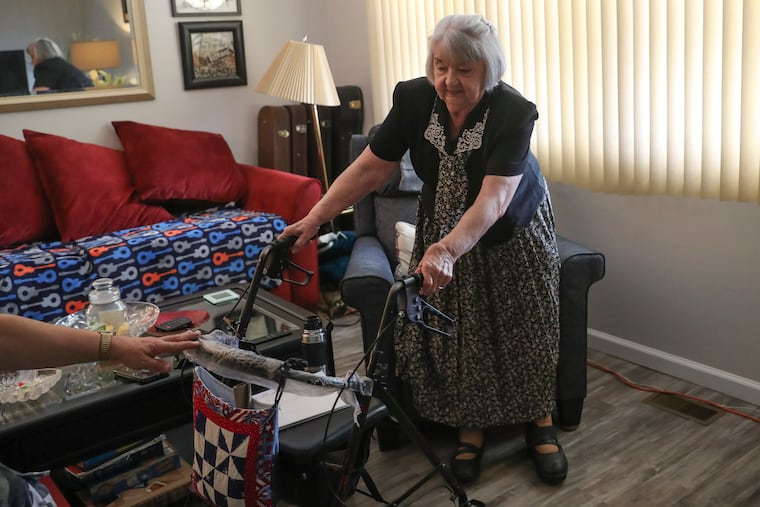Polio was once the most feared disease in the U.S. A new Annenberg poll shows most Americans know little about the virus, despite recent N.Y. outbreak.
Most people are unfamiliar with polio and how it’s spread, according to a survey by the Annenberg Public Policy Center of the University of Pennsylvania.

Not that long ago, Philadelphia-area parents were so afraid of polio that they didn’t let their kids swim in public pools or splash in city fountains. Some kept their kids away from other children during warmer months when poliovirus was most active.
But today, the once-dreaded virus that killed thousands of children and paralyzed many more at its peak in the early 1950s is not on the minds of most Americans.
In fact, most people are unfamiliar with polio and how it’s spread, despite a recent outbreak in New York, according to a new survey by the Annenberg Public Policy Center of the University of Pennsylvania.
Center Director Kathleen Hall Jamieson, 76, described growing up in “an extraordinarily frightening” time prior to the availability in 1955 of a polio vaccine created by Pittsburgh-area virologist Jonas Salk.
“We take it for granted that we’re not going to get it,” Jamieson said in an interview Monday.
In the Philadelphia region, there are hundreds of polio survivors still grappling with the physical and emotional effects of the disease. Earlier this fall, The Inquirer spoke with six polio survivors about the debilitating disease’s ongoing toll and the modern-day consequences of remaining unvaccinated.
» READ MORE: These Philadelphia-area polio survivors continue to suffer from a disease thought to be long gone.
No cure for polio
Only a third, or 33%, of Americans now understand there is no cure for polio, Annenberg found in a national survey of 1,572 adults conducted in mid-October.
Most of the respondents said they were unsure what would put them at risk for contracting the virus.
For instance, only 31% of respondents said they knew that unvaccinated people were at greater risk of getting polio if they were in contact with droplets or sneezes from an infected person; just a quarter knew that poliovirus can be spread by contaminated food or water; and only 25% realized they were at higher risk of infection if they were in contact with the stool of an infected person, the survey found.
Wary of new COVID booster
Americans who are vaccinated are well protected against polio. The polio vaccination rate in Philadelphia for children under 5 is 90% for the required four doses. However, in a few pockets of South Philadelphia, less than 60% of children have been vaccinated against polio, according to the city.
The Centers for Disease Control and Prevention recommends children receive injections of the polio vaccine at 2 months, 4 months, between 6 and 18 months, and between 4 and 6 years old.
The survey found that far more people support getting vaccines against polio or monkeypox than the latest COVID-19 bivalent booster.
“We have an extraordinarily effective polio vaccine in a context in which there’s a lot of doubt about the COVID vaccine,” Jamieson said, noting that an earlier Annenberg survey found a hesitancy among adults to vaccinate kids against a range of childhood diseases.
‘High public knowledge’
In July, the United States reported its first polio case in nearly a decade. A young man from New York, who was unvaccinated and developed paralysis, tested positive for a strain of the virus that health officials believe mutated from a weakened live virus used in the oral vaccine.
People who receive the oral vaccine can shed the weakened virus in their stool. In communities with unvaccinated or under-vaccinated people, the weakened virus can circulate and eventually mutate to become a dangerous form of polio that can cause paralysis.
For this reason, the United States no longer uses the oral vaccine. Doctors here administer the vaccine to children by injection, which does not contain any live virus. However, many developing countries still rely on the oral vaccine because it’s cheaper and easier to distribute, with just a few drops on the tongue.
More than 60% of those surveyed said they knew that the injectable vaccine cannot give a recipient polio. “That’s high public knowledge, but you’d like it to be 100%,” Jamieson said.
Wastewater not tested
It’s still not clear exactly when or where the young man from Rockland County, N.Y., contracted the disease, but subsequent wastewater testing found a similar strain in samples in New York.
» READ MORE: Polio is likely circulating in Philadelphia. Here’s what you need to know.
In an interview with The Inquirer last month, Philadelphia’s Health Commissioner Cheryl Bettigole said it was likely that the polio virus was circulating undetected in our region.
Like most public health agencies across the country, Bettigole’s office does not routinely test wastewater for polio. But Bettigole said she hoped to adapt the city’s testing program — currently focused on COVID-19 — to look for polio and get ahead of potential spread among people who are unvaccinated or under-vaccinated.
“One case of paralytic polio potentially indicates that there may be hundreds of other cases,” the city’s Health Department cautions.